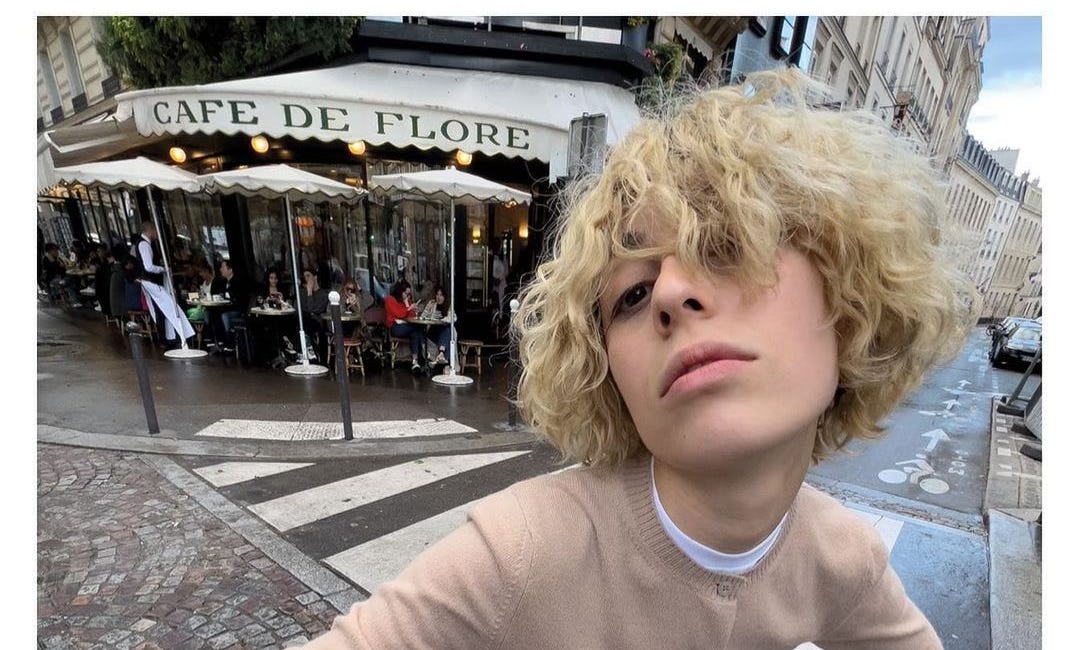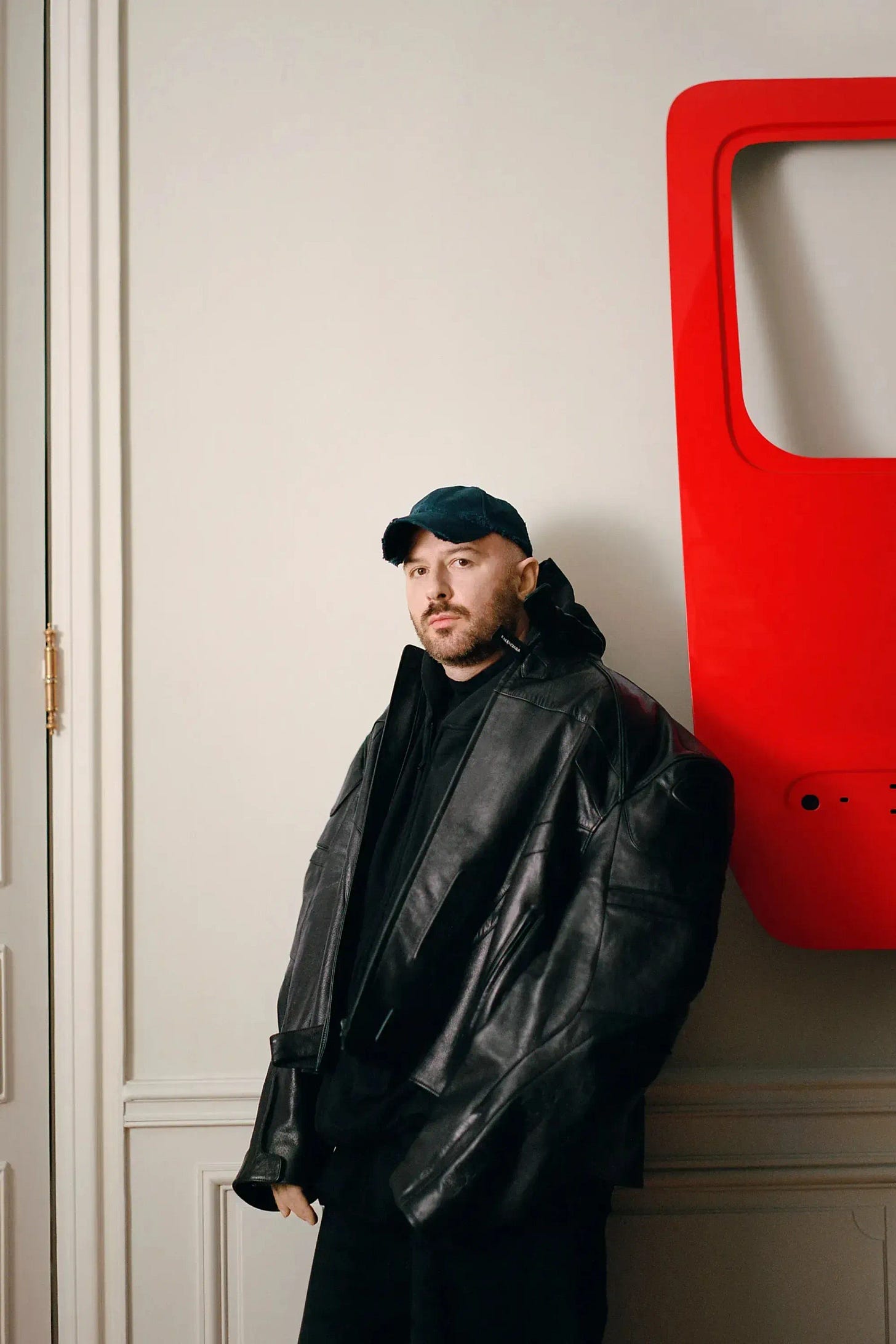Are we facing the era of the omnipresent creative director?
Nowadays, a change in creative director at a fashion house can resonate as much as the launch of a star collection
As I’m writing this, Jonathan Anderson is making his debut in Paris with Dior, and as I watch Rihanna and Travis Scott rocking Anderson’s new designs, I can’t help but wonder: how has the role of the designer transformed over time? Here’s a little something I wrote about the current game of musical chairs in fashion.
These days, a creative director change in a fashion house can resonate just as much as the launch of a show-stopping collection. In the era of hyper-personalization, brand identity is undergoing a full-on metamorphosis: designers and creative directors have become the narrative stars of the houses, sometimes even overshadowing the institutional legacy that birthed them. This phenomenon raises some fascinating questions: whose story does a luxury brand tell—the centuries-old logo or the personal vision of its designer? What does it mean for consumer loyalty when the person behind the fashion becomes more important than the name on the label? In this piece, I’ll try to tackle these questions, touching on the designer-author figure, the medio-persona, loyalty centered on people, the risks of taking personalization to the extreme, and the formulas some houses use to stay relevant by blending innovation with tradition.
The Designer as Author and Narrative Core
It’s no secret that a fashion show, photoshoot, or window display reflects the aesthetic signature of its creative directors, showcasing how the designers’ personal vision can shape a brand's narrative.
At today’s top luxury houses, the star designer doesn’t just act as the author—they’re the one responsible for sales, success, or failure. Their aesthetic and conceptual decisions tell the brand’s story season after season, to the point where their POV can become synonymous with the brand itself. A prime example is Phoebe Philo at Céline: under her creative direction, Céline became “synonymous with Philo, and vice versa,” fully imbued with the elevated minimalism and sensitivity she brought to the table. Similarly, when Alessandro Michele debuted his first collection for Valentino after leaving Gucci, critics pointed out that it wasn’t a “Valent-ucci” hybrid but a proposal unmistakably Michele. This highlights how a designer’s personal vision can eclipse the house’s traditional codes.
Sometimes, the designer’s presence is so dominant that the brand’s historical legacy takes a back seat. Many brands today “care less about preserving their legacy codes and are more proactive in integrating a creative director’s cult aesthetic,” to the point where “it’s the designer’s identity—not the luxury house’s—that allows the business to thrive,” as per aquent.com. In other words, the brand adopts the personality of its head creative. In extreme cases, the house becomes almost autobiographical of its founder: Off-White, for example, was inseparably tied to Virgil Abloh. Its codes and style were born from his vision, rather than being a flexible universe that others could reinterpret over time. So it’s no surprise that after his passing, “Off-White lost touch with its essence” and struggled to maintain the same allure under new designers. When the author disappears, the brand’s story is left orphaned. Sound familiar? Alexander McQueen, anyone?
Loyalty to the Creator Over the Brand
This centrality of the designer has also changed the consumer loyalty dynamic. Nowadays, many fashion enthusiasts follow their favorite designers from house to house, with a loyalty that’s more personal than corporate. There’s no doubt that some followers’ obsession is with the designer, not the house they work for. For example, there are collectors who treasure dozens of pieces by a specific designer, considering them personal milestones in that designer’s history. A current example is Jonathan Anderson at Dior, but there are also collectors eager to snap up Anderson’s pieces at Loewe or Galliano’s at Comme des Garçons.
When such a creative leaves the house, these fans feel like the brand is no longer “their” brand and migrate with him or her to the new destination, as was the case with the Philophiles who stopped following Céline after Philo’s departure and eagerly awaited her next project.
The industry gives us daily examples of this. Recent headlines like “The Alessandro Michele-fication of Valentino” or “Jonathan Anderson Joins Dior” illustrate how clients can be more loyal to the creative director than the commercial name. In fact, there are resell platforms and fashion archives that classify items not just by brand but by designer, reflecting that the public seeks creations by a specific creative over the label. In 2024, the fashion world witnessed a real reshuffle of creative directors at major houses, and with each move came the question: will devoted shoppers stick with the brand they’ve always known, or the person behind their favorite style? For a notable segment of fans, the answer leans toward the latter. Renowned designers have become celebrities, even “search terms” in their own right; it’s their vision that generates emotional attachment. After all, a consumer who deeply values a designer’s aesthetic will see their collections almost as an extension of themselves, regardless of the logo under which they’re presented.
The Risks of Hyperpersonalization
Now, this extreme personalization of brand identity comes with significant risks. When everything revolves around one person or catering to ultra-specific preferences, the brand’s coherence and stability can suffer. A recent panel on the luxury industry highlighted the delicate issue of how to achieve extreme personalization “while respecting the identity and values of the brand” (read more at cryptonomist.ch). In other words, how do you innovate and adapt the narrative to individual tastes without losing control over the institutional essence?
Putting all your chips on one creative’s charisma can leave the company vulnerable. If a brand’s identity is entirely molded to a designer’s vision, what happens when they leave? This makes me think about medio-personas and the role individuals play in digital communication.
Even at houses with long histories, a sharp shift in aesthetics can alienate the existing clientele. The sudden transformation of Céline under Hedi Slimane in 2018 is illustrative: his debut largely ignored Philo’s minimalist spirit, enraging the die-hard fans of the previous era. These Philophiles felt that their brand had been replaced overnight with something unrecognizable. While Slimane later found commercial success, that initial shock showcased the cost of a drastic break from recent stylistic legacy. In general, overpersonalization—whether it’s adapting products to the extreme for specific niches or reinventing a house’s image with every new creative director—can result in a diluted or inconsistent brand image. Without a unifying narrative, the brand risks becoming a collage of disconnected chapters dictated by creative egos or fleeting trends, losing some of its credibility and long-term value.
The “media-person”: the emerging phenomenon in digital communication
In recent years, we’ve been witnessing a structural shift in the way information is produced and circulated. It didn’t happen overnight — it's been a gradual movement, where journalists, editors, content creators, and even academics or specialists have begun operating under a model that is at once individualistic and networked:
Innovation and Legacy: Finding the Balance
So, how do you navigate the need to innovate while preserving legacy? Many fashion houses are learning that the key lies in balance. Neither petrified tradition nor constant reinvention alone guarantees sustained success. Analysts argue that “the combination of strong brand codes and a visionary creative director is the winning formula” according to aquent.com for building a powerful identity. In other words, the most successful houses are those capable of building on their inherited values and aesthetics, while evolving them alongside an authentic creative voice.
There are examples at both extremes and in between. Some historic houses have opted for careful continuity: for decades, Miuccia Prada at Prada or Donatella Versace at Versace have maintained a clear thread, demonstrating that gradual evolution can generate fans just as loyal as radical change. Similarly, long-standing creative directors like Jonathan Anderson at LOEWE or Casey Cadwallader at Mugler have helped their brands thrive by maintaining a consistent aesthetic over time. Others have sought to revitalize legacy without breaking it: Sarah Burton, for example, flourished for 13 years at the helm of Alexander McQueen, respecting and continuing the vision of the late Lee Alexander McQueen. Her success showed that it’s possible to inject fresh life while honoring the founding spirit, although in the end, commercial pressures also pushed for a change to refresh the proposal.
Today, the brands leading trends tend to combine recognizable codes with timely creative twists. Think of houses like Prada, Saint Laurent, Bottega Veneta, or LOEWE, which have built well-defined brand universes while also cultivating novelty: each one has a clear aesthetic and iconic pieces, but knows how to reinterpret those codes with new perspectives and “it” objects season after season. The inherited codes offer a solid foundation that anchors authenticity, but they would fall flat without the inspiration and execution of visionary creative directors. Likewise, even the most innovative direction needs to rely on something real and true to the brand to resonate beyond just a momentary trend. As experts have pointed out, a brand’s legacy is its heritage of meaning, but only the creative vision combined with that legacy can translate into consumer loyalty and sustainable results.
At the end of the day, a fashion brand’s identity in the era of hyper-personalization is built on that delicate balance between heritage and personal innovation. The houses that manage to integrate their designers’ unique voices without losing the essence that makes them distinctly themselves will be the ones to endure with relevance. In a world where consumers are increasingly seeking personal connection and authenticity, experimenting while keeping the narrative in check is the way forward. In other words, fashion can—and should—embrace personalization and the designer’s signature, but “without losing its identity” in the process. That will be the formula for keeping the magic of luxury alive, speaking directly to a global and hyper-personalized audience, but staying true to itself.








